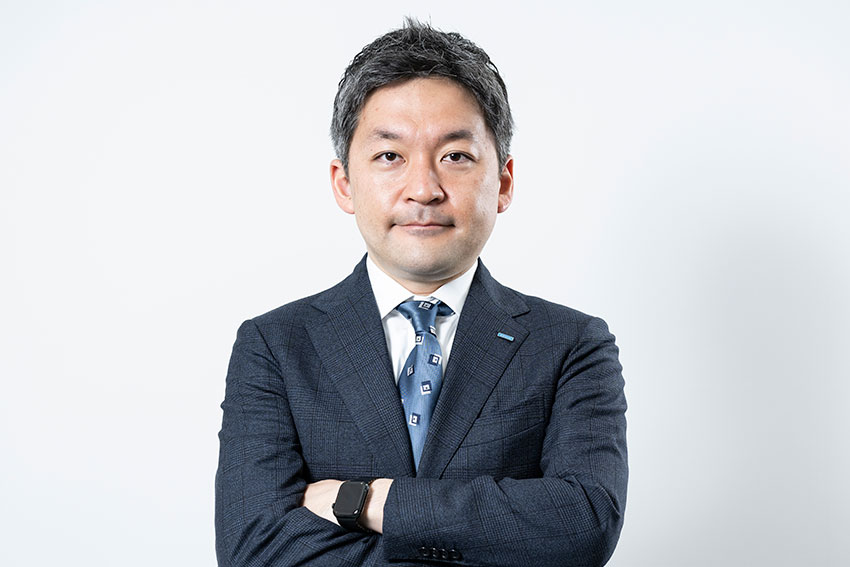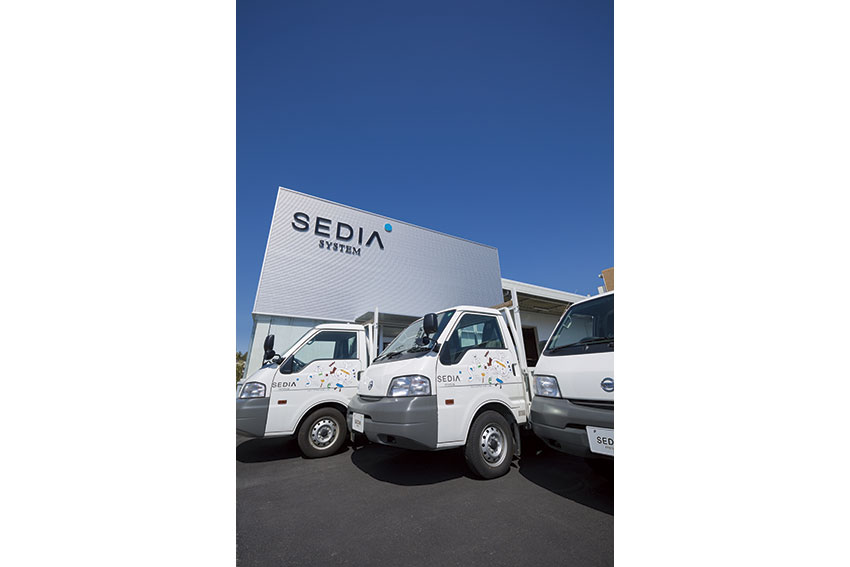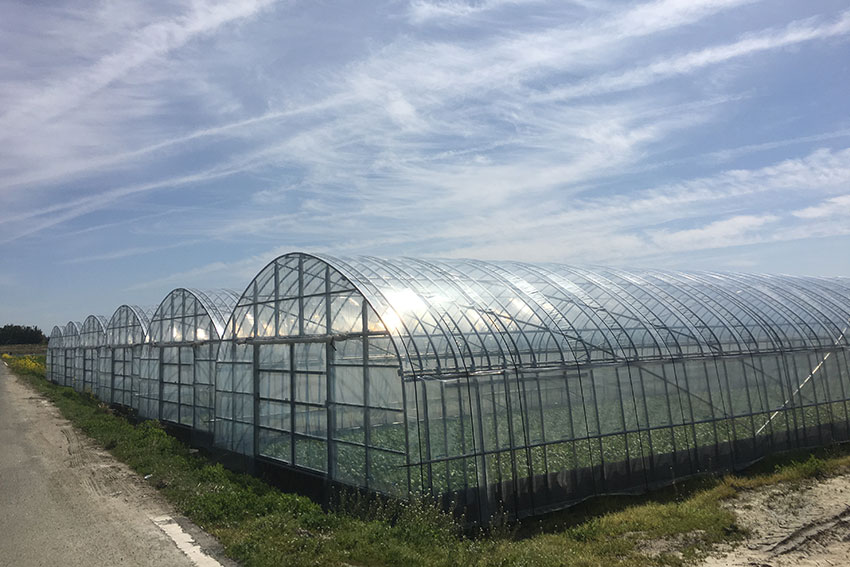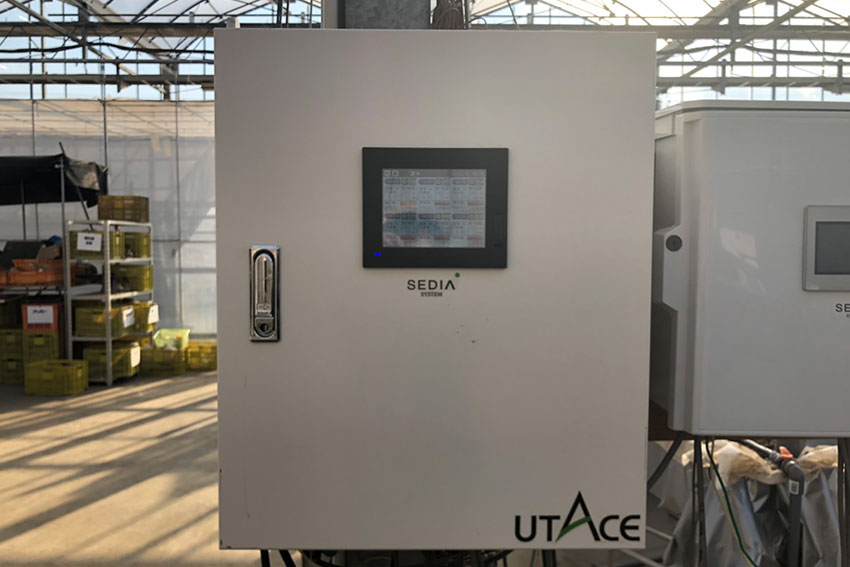As both a trader and manufacturer of agricultural greenhouses, Watanabe Pipe is ensuring that Japan’s farmers are adequately equipped to feed the nation

Over the last 25-30 years, Japan has seen the rise of regional manufacturing competitors who have replicated Japanese monozukuri processes but at a cheaper labor cost, pushing Japan out of mass production markets. However, we still see that many Japanese firms are leaders in their respective fields. As a trading company specializing in construction materials and a comprehensive agricultural greenhouse manufacturer, how have Japanese firms been able to maintain this leadership despite the stiff price competition?
I think that Japan has truly lost its competitive advantage in some industries like the automotive sector, but some Japanese firms remain dominant in niche markets. One reason might be the technological advantage and the other reason might be quality. Compared to overseas producers, Japan retains an advantage, especially in terms of the quality and care taken when manufacturing.
Japan is in an interesting situation because it is the oldest country in the world and has a shrinking demographic. This is creating two big challenges: first is a labor shortage; secondly is a shrinking domestic market. As a company that works specifically in the field of agriculture, what are the challenges and opportunities that this demographic situation creates for Watanabe Pipe?
The population decline has been one of the biggest challenges that our company has faced, and as you may know, the number of newly constructed homes this year halved from 1.6 million to 800,000. The market for newly built houses has shrunk considerably and is going in a downward trend. What we have tried to do is increase the coverage of the products and materials we deal with. In the past, we have largely dealt with plumbing and construction materials, but on top of that, we have started working with prefabricated wall panels, functional residential products such as windows, and electrical components.
In order for us to increase our activities and deal with the current situation, we are trying to diversify our sources of revenue. This means that we have sold and bought products in the transaction with the customers as a business in the past, but we have also tried to expand our business to reach out to the upstream. On top of selling our products and materials, we have started to provide services for equipment and facility design for our existing customers. We have also expanded our services applying for government subsidies or grants on behalf of our customers in order to further reach out to the upstream.
In regards to the domestic market, across Japan, we have more than 500 service centers nationwide for offices and warehouses with their own logistics capability. If we can increase the coverage of our materials and goods, even if the population continues to decline, we will have established customers in specific areas. Through this coverage, we also believe that we can increase our company’s market share.

When we have interviewed trading houses, we have often been told that the role of traders like yours is changing, as they are expected to offer after-sales services and the belief is that this will continue in the future. Do you think the role of trading houses is changing? Looking five years from now, how do you think that the role of your company will have changed?
I think our role will change and there is a real need to diversify simply because the market is shrinking. A variety of revenue sources is required in order to prosper, and some examples include after-services such as maintenance. We have a call center located in the country side in which we receive inquiry calls from house builder’s customers. It enables us to accept some requests for maintenance. In the future, we believe that we can expand this kind of service for outbound calls in addition to incoming inquiries.
Currently, our business is B2B, but in the future, we believe that we might be able to do Business-to-Consumer-for-Businesses. The thinking is that we could reach out to consumers for businesses that can then be transferred to those businesses.
One business you have is manufacturing vinyl greenhouses, and 80% of damage caused to these greenhouses is wind related. This can range from minor damage such as peeling, all the way to serious cases of total collapse. Japan can suffer extreme wind forces during typhoon season, so when developing greenhouses, how are you able to ensure they can withstand these extreme forces?
In order for our products to withstand strong winds, it is important to have thick and big pipes. However, by doing that, costs will inevitably increase, and the optic volume required by some vegetables will go down. In order for us to maintain a thin mainframe, we have tried to utilize and apply stiff materials. We also have a truss structure that ensures that the whole product maintains its shape. To keep the costs down, we have co-developed with some steel manufacturers. All of this combines to maintain the necessary optic volume required to grow certain types of vegetables, and this could only be achieved thanks to the co-development with those manufacturers. Additionally, we have many patents related to agriculture and greenhouses that we have acquired.

One example is a patent we have to widen the width of the greenhouse which will enable the user to acquire more optical light which will, in turn, increase crop yield. Another is painting the materials white to increase the light and volume of sunlight. As you can see, we have been advancing our materials and products to endure harsh weather conditions.
Another product you have to help crop growth is the Gaia Series; a hydroponic cultivation system used to grow strawberries, tomatoes, and leafy vegetables. How is the Gaia Series superior to more conventional hydroponic systems?
The Gaia system is a kind of liquid cultivation system and it can circulate inside the greenhouse. The name Gaia applies to the entire system as a whole. We have also recently introduced a product called the Ultra Ace Series, which is a control panel that can automatically control irrigation as well as monitor and track crop history. This can provide users with extremely valuable information on crop yield and customers really appreciate this data.

The Watanabe Pipe Group has been promoting DX since 2021 through the Sedia Customer Web. Could you tell us a little bit more about your DX strategy?
This is the kind of system that we can provide to farmers, and it enables them to work scientifically by analyzing a variety of different data. You have also mentioned our greenhouse configurator, which allows us to apply multiple specs and an estimate can come out. Our aim is not only dealing with our existing farmer customer base, but the acquisition of new customers, such as enterprises, in order to expand our reach.
How do you think digital technologies will impact the agricultural field? What do you think will be the main changes in agricultural practices 5-10 years from now?
Currently, I would say that the average age of a farmer in Japan is 66 years old, so I believe that agriculture in Japan is not sustainable. The greenhouse itself however has been enlarged due to new entrants into the field. Although the population for agriculture has been in decline, the size of the greenhouse industry in particular has remained the same. Those new entrants have a high awareness of increasing the agricultural business, and that is the area we would like to approach. By doing that, we would like to increase the productivity of agriculture in Japan as a whole.
We are also trying to pursue overseas business expansion and already we have entered the market in Vietnam and Taiwan. The immediate target is the further expansion of our Taiwan business.
What role do co-creation and partnerships play in your business model? Are you currently looking for partnerships in overseas markets?
In Taiwan, the company is 100% owned by us but we are still seeking a partner to help us develop our business in overseas markets. Honestly, whether that is a distributor or a manufacturer, we are looking for help in overseas regions.
What are some of the synergies between your agricultural manufacturing capabilities and your trading capabilities? How does your background as a trader help with your manufacturing, and vice versa?
Let me explain a little bit of the history of the company to answer that question. I am the third generation leader of the company, and my grandfather was the one who established the firm 70 years ago. We started as a distributor of pipes for construction use, but in the 1960s, we expanded this business to the agriculture industry. Greenhouses are made from steel pipes, so it made sense. Both businesses have a long history, accounting for more than 60 years. In terms of synergistic effects, we have been taking our customer base from one business and introducing them to the other.
Aren’t your trading partners scared that you are going to become competitive if you start manufacturing the same product?
That could be a possibility. Of course, we always try to take care of our existing customers, and as an example with our customers in construction materials, we will not be doing any form of business to compete with them for construction work. It is the kind of thing that we always need to be aware of.
When it comes to agricultural manufacturing, our business format has changed recently. In the past as a manufacturer of agriculture products and materials, we used to basically sell parts and components for pipe houses or greenhouses, but recently we have started to sell the greenhouse itself as a kind of package to our customers. We have also increased the number of customers for large-scale greenhouses like this.
Between the financial years of 2018 and 2022, Watanabe Pipe saw five consecutive years of sales increase, jumping from JPY 272 billion to JPY 335 billion. Can you tell us some of the reasons behind this impressive sales performance?
The biggest reason is that we increased the number of sales offices and expanded our sales network. It also means that we have explored and acquired new customers. In Japan, there are about 100,000 contractors that we have as existing customers. Another reason is that against the backdrop of the supply chain disruptions experienced during the COVID-19 pandemic, delivery dates and lead time has been disrupted. We increased the number of stocks in our inventory in order to meet the needs of our existing customers.
The third reason is because of price increases, and that is because the price of construction materials has gone up in general. This can be reflected in our sales increase as well.
We have been doing a lot of activities around the idea of DX recently. We have developed a system in which customers can place an order online as well as receive quotations and estimates from us. Customers can take those quotations and quickly turn that into an order. We also have another system called Sedia Connect, and on this system, about 100,000 existing customers can match with each other’s businesses. An example of this working can be seen in an existing customer we have in Tokyo who is trying to run their business for construction in Hokkaido. In this case, we can introduce some of our customers as a reliable builder/sub-contractor located there to this Tokyo-based company. We used to rely heavily on face-to-face interactions to generate sales, but obviously, with COVID-19, this has become a less viable option. For this reason, we have switched to online seminars and our YouTube channel. We have tried to promote this as DX activities that can contribute to our increase in business expansion. I would go as far as to say that since COVID-19 I feel that DX has become a core strength of our business.
Moving forward, what other regions have you identified for further expansion, and what strategies will you employ to do so?
Right now, we are seeking opportunities in Southeast Asia, with countries like Singapore and Thailand. Realistically we are looking for M&A opportunities in the region. Additionally, I would say that I am interested in opportunities in the United States, and we are looking for either M&As or a chance to buy a distributor for construction materials there.
We also believe that there must be opportunities in Vietnam given the current situation between the United States and China. Tensions are running high between the two nations and therefore we have increased our investments in Vietnam. Obviously being in Vietnam opens opportunities in local countries in the ASEAN region as well and we will be looking for those opportunities too.
Imagine that we come back and have an interview again on the last day of your presidency: is there a goal or a dream that you would like to achieve as the third-generation president of Watanabe Pipe?
The critical part for me as the third-generation president of the company is to pass the baton on to the fourth-generation president. I guess that the important point is that I need to keep sustaining the business we have been running. Although the Japanese market will continue to shrink, we need to think and expand into the next generation of businesses that we will run here at Watanabe Pipe. Obviously, the fourth-generation president will have their own challenges and will look to acquire more revenue sources.
In terms of specific numbers, we hope to achieve JPY 500 billion in sales by 2030, but beyond that, we would like the next generation to look past pursuing revenue and focus more on securing profit. Personally, I used to work at Mitsui & Co., Ltd. which is another famous trading company, and it has drawn my attention to the need for overseas expansion. Looking even further into the future, I would like all of our employees to feel proud of working for Watanabe Pipes,
0 COMMENTS